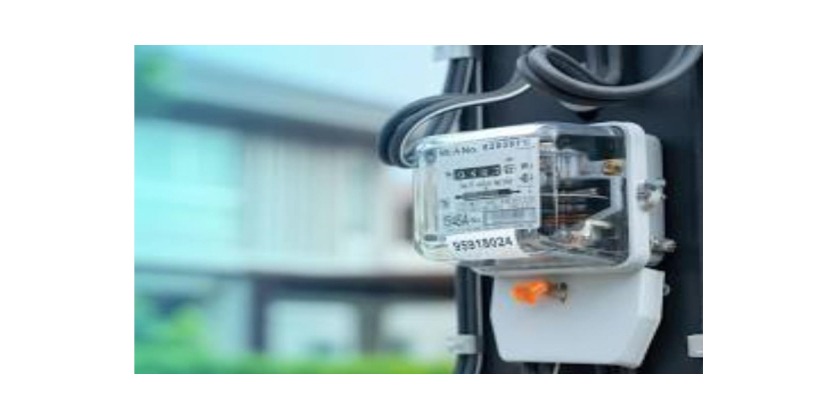Smart Meter Market on Track for USD 55.5 billion by 2033
August 12, 2025

Market Overview:
According to our latest research, the global smart meter market size in 2024 stands at USD 26.7 billion, with a robust compound annual growth rate (CAGR) of 8.4% projected from 2025 to 2033. By the end of 2033, the market is forecasted to reach USD 55.5 billion.
In particular, the integration of 5G, blockchain, and cloud-based data platforms is enabling a new generation of smart meters that are more efficient, scalable, and cybersecure. As utility companies transition from legacy systems to digital grid models, active smart meters are becoming central to future-proofing operations.
Key Market Drivers
1. Increasing Demand for Energy Efficiency
Active smart meters empower consumers to track energy usage in real time, identify inefficiencies, and adjust behaviors accordingly. For utilities, they provide granular visibility into energy flows, enabling demand response programs and load balancing that reduce grid stress and operational costs.
2. Government Mandates and Regulatory Push
Across the globe, governments are enforcing stricter environmental standards and pushing for smart metering systems to support national energy goals. The European Union, for instance, has set targets for 80% smart meter penetration for electricity by 2024, while countries like India and China are investing in nationwide smart grid rollouts.
3. Integration with Renewable Energy Sources
The intermittent nature of renewable energy like solar and wind requires real-time monitoring and balancing. Active smart meters help manage distributed energy resources (DERs) and support net metering, enabling smoother integration into the grid and empowering prosumers to sell excess energy.
4. Advancements in Communication Technology
Technologies such as NB-IoT, LoRaWAN, Zigbee, and 5G have improved the communication capabilities of smart meters, ensuring seamless data transfer, even in remote or densely populated urban areas.
Applications Across Sectors
1. Residential
Homeowners benefit from accurate billing, energy-saving insights, and alerts for abnormal consumption. Active smart meters also allow for prepaid billing models and seamless switching between providers in deregulated markets.
2. Commercial and Industrial
Businesses use smart meters to track usage patterns, reduce peak demand charges, and implement energy-saving strategies. In industries, real-time monitoring is essential for predictive maintenance and operational efficiency.
3. Water and Gas Utilities
Active smart meters are being adopted for gas and water to detect leaks, automate meter reading, and support consumption-based pricing models. These tools improve resource management and reduce losses in transmission.
Regional Insights
North America
With widespread smart grid investments and mature utility infrastructure, the U.S. and Canada lead in smart meter penetration. Regulatory mandates and customer awareness continue to fuel market growth.
Europe
Countries like the UK, Germany, Italy, and France are aggressively deploying smart metering systems as part of their green energy transitions. The EU’s Clean Energy Package is a key driver here.
Asia-Pacific
China leads global installations by volume, supported by massive state-sponsored initiatives. India’s Revamped Distribution Sector Scheme (RDSS) aims to install over 250 million smart meters by 2026. Japan, South Korea, and Australia are also key contributors.
Middle East & Africa
Smart city projects in the UAE, Saudi Arabia, and South Africa are increasingly integrating smart metering systems to ensure water and energy sustainability in resource-scarce environments.
Challenges and Market Constraints
1. High Initial Deployment Costs
Although long-term savings are substantial, the upfront costs of hardware, installation, and system integration remain a barrier, especially in developing economies.
2. Data Privacy and Security Concerns
As smart meters handle sensitive consumption and billing data, cybersecurity and privacy have become critical issues. Utility providers must invest in robust encryption and secure communication protocols.
3. Interoperability and Legacy Systems
Ensuring compatibility between various vendors, platforms, and older infrastructure presents integration challenges, often requiring significant investment in backend systems.
Future Outlook:
The future of the active smart meter market lies in its convergence with artificial intelligence, machine learning, and predictive analytics. These technologies will enable smart meters to evolve from passive data recorders to decision-making devices capable of forecasting usage patterns, preventing failures, and automating energy management.
The market is expected to diversify with specialized smart meters for EV charging stations, community solar grids, and multi-utility management. With global net-zero goals accelerating, the role of active smart meters in achieving energy transparency, resilience, and sustainability will only become more critical.
Key Players
- Siemens AG
- Schneider Electric SE
- Landis+Gyr Group AG
- Itron Inc.
- Honeywell International Inc.
- ABB Ltd.
- Sensus (Xylem Inc.)
- Aclara Technologies LLC




